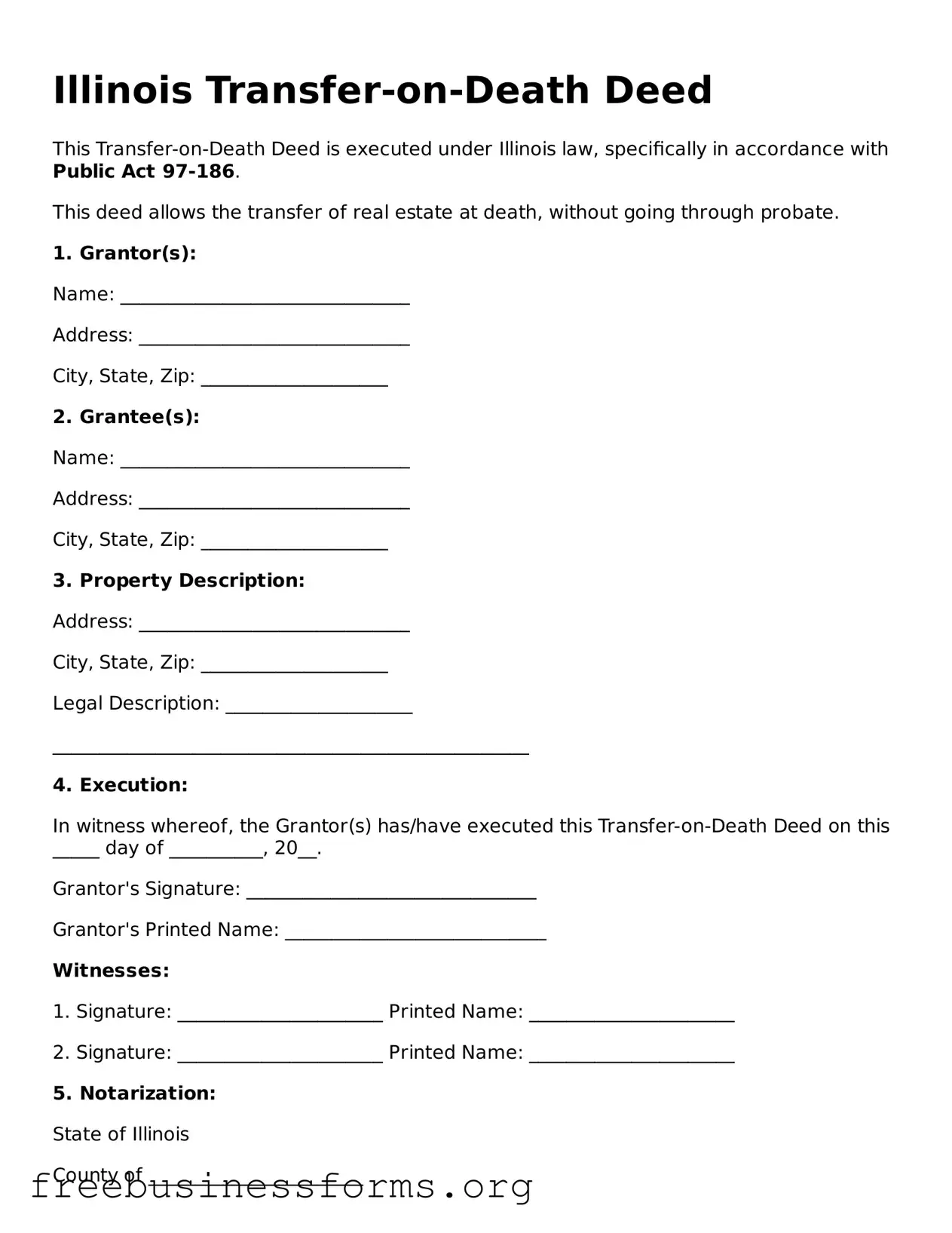Illinois Transfer-on-Death Deed
This Transfer-on-Death Deed is executed under Illinois law, specifically in accordance with Public Act 97-186.
This deed allows the transfer of real estate at death, without going through probate.
1. Grantor(s):
Name: _______________________________
Address: _____________________________
City, State, Zip: ____________________
2. Grantee(s):
Name: _______________________________
Address: _____________________________
City, State, Zip: ____________________
3. Property Description:
Address: _____________________________
City, State, Zip: ____________________
Legal Description: ____________________
___________________________________________________
4. Execution:
In witness whereof, the Grantor(s) has/have executed this Transfer-on-Death Deed on this _____ day of __________, 20__.
Grantor's Signature: _______________________________
Grantor's Printed Name: ____________________________
Witnesses:
1. Signature: ______________________ Printed Name: ______________________
2. Signature: ______________________ Printed Name: ______________________
5. Notarization:
State of Illinois
County of _______________________
Subscribed and sworn to before me on this _____ day of __________, 20__.
Notary Public: ________________________
My Commission Expires: ______________
